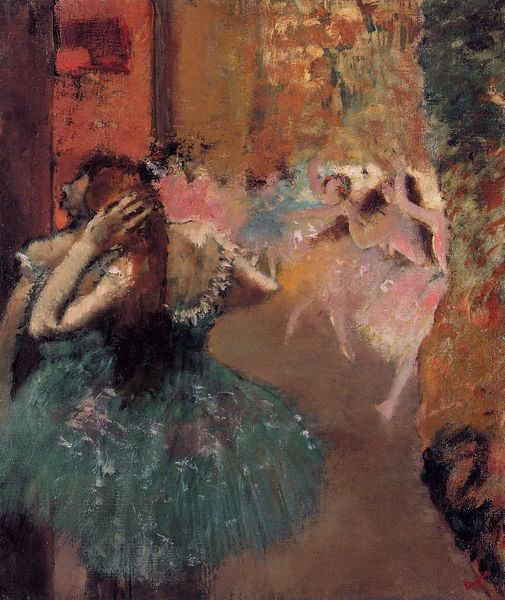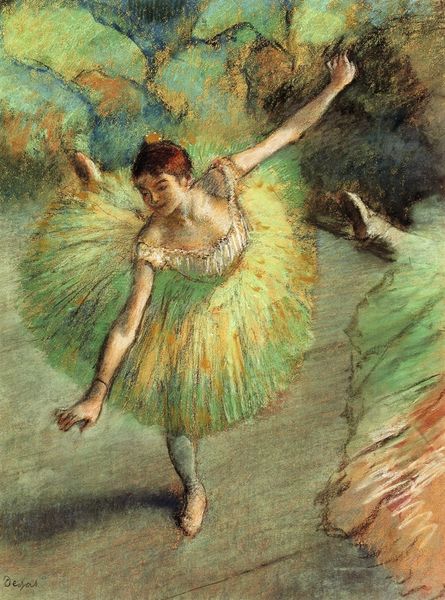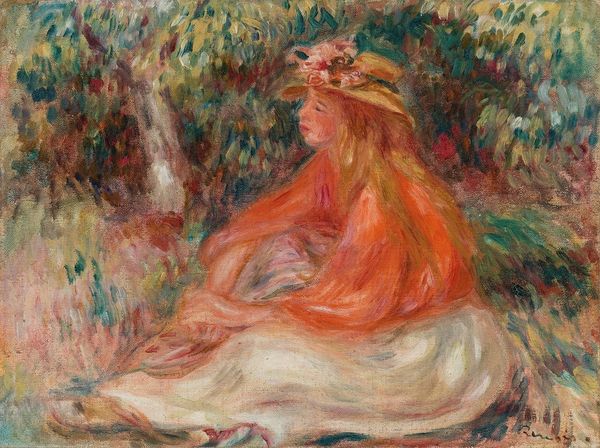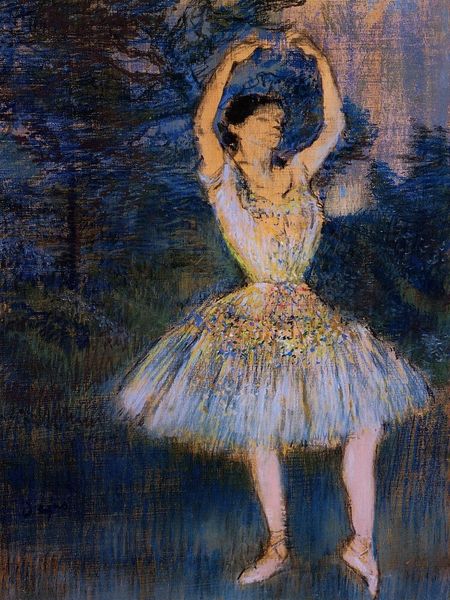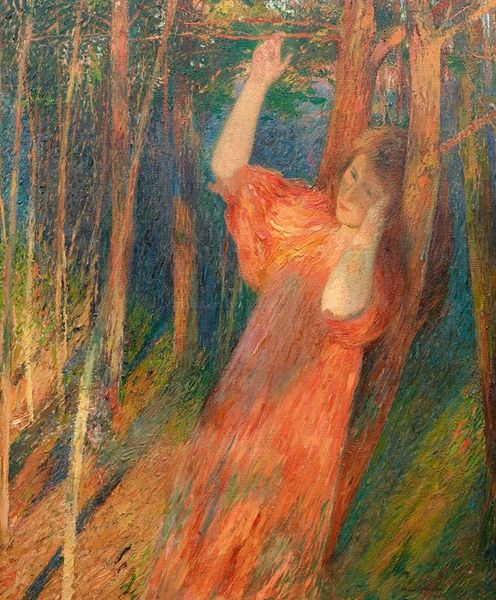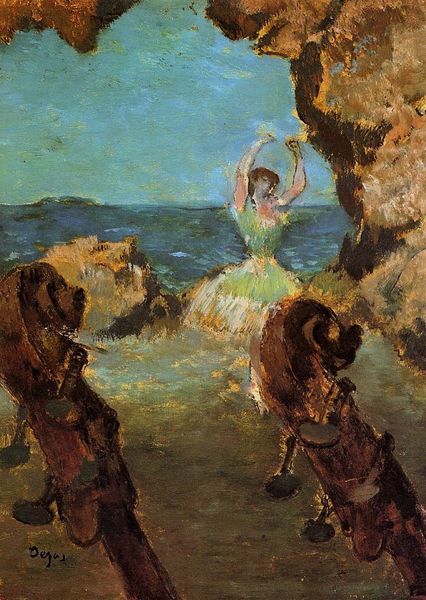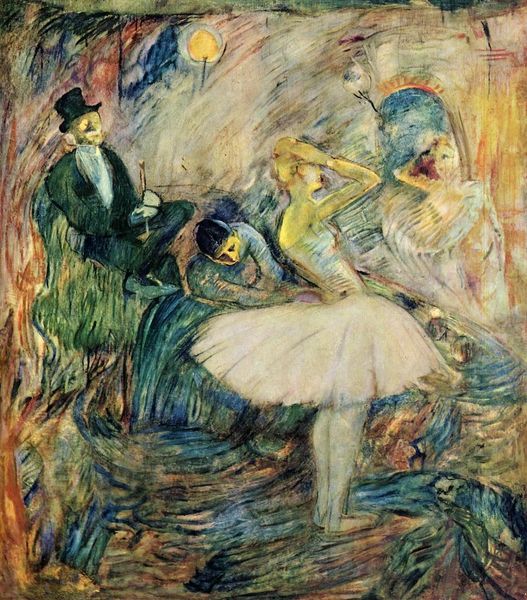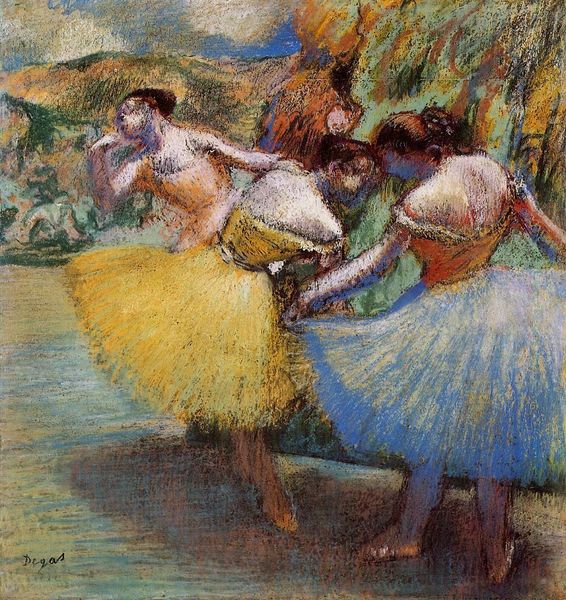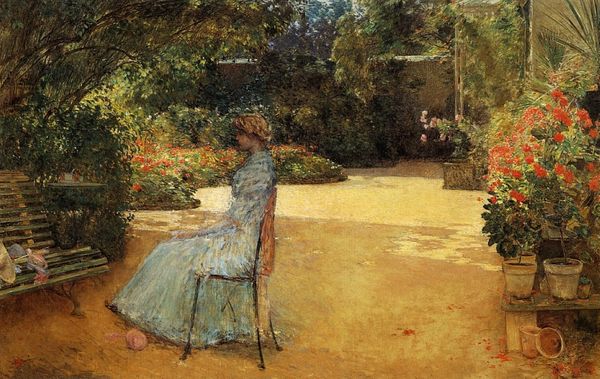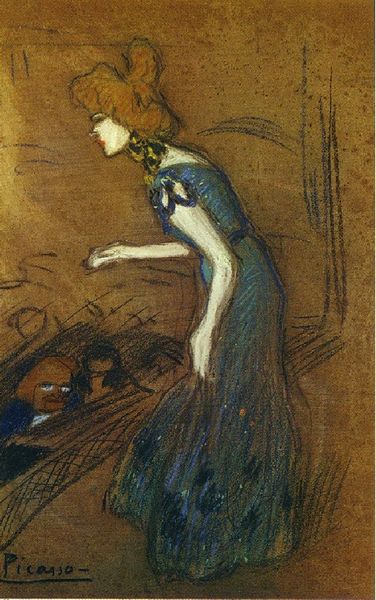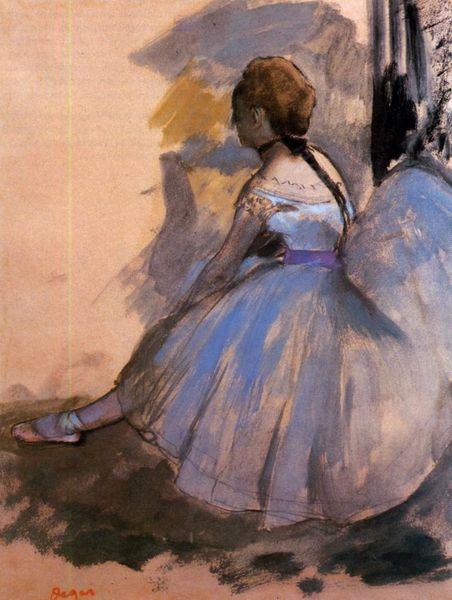
painting, oil-paint
#
portrait
#
painting
#
impressionism
#
oil-paint
#
figuration
#
oil painting
#
genre-painting
#
history-painting
#
post-impressionism
Copyright: Public domain
Curator: Allow me to introduce Toulouse-Lautrec's 1888 oil on canvas, "The Spanish Dancer." Editor: My initial thought is a kind of contained chaos. There's dynamism in her pose, but the muted palette feels like observation rather than participation. It also brings up questions for me. Curator: Questions like what? For me, the swirling brushstrokes immediately evoke the passion and drama of flamenco. You feel the dancer’s movement; her embodiment of cultural heritage expressed through dance is vibrant. But what do you feel she is hinting at? Editor: Well, whose gaze is she performing for? And where is this taking place? Is it a celebration of cultural expression, or a depiction filtered through a colonial lens? Because, beyond the dynamism you mention, it’s striking how anonymous her features are, right? I also question how the original context intersects with continued post-colonial perceptions. Curator: That's fair. Her anonymity does detach her somewhat. Maybe Lautrec isn’t so focused on this particular woman, as a type she represents? As such it leans on familiar tropes of otherness in art to tell the viewer about a very common stereotype from the period of its creation. I mean the semiotics of posture, costume, and colour work in harmony for an educated observer to decode the work and understand a collective story. Editor: I guess. Still, how does the piece move from then to now? Who is this work speaking for and to in the 21st Century? There are things encoded, as you say, but they might feel different as power shifts globally, or when seen outside their place of origin. It requires consistent contextualizing, or a disclaimer of a kind that asks contemporary viewers to consider our point of view. Curator: I hear you. I do think the piece opens dialogues, showing not only dance but the cultural and social baggage around how certain cultures and individuals are, or were, portrayed. Editor: Exactly! Because even in its romantic portrayal of dance, there are echoes that force us to address representation itself. The work creates a unique bridge, perhaps a tense one, where the past and present gaze at each other, inviting a shared reflection.
Comments
No comments
Be the first to comment and join the conversation on the ultimate creative platform.
